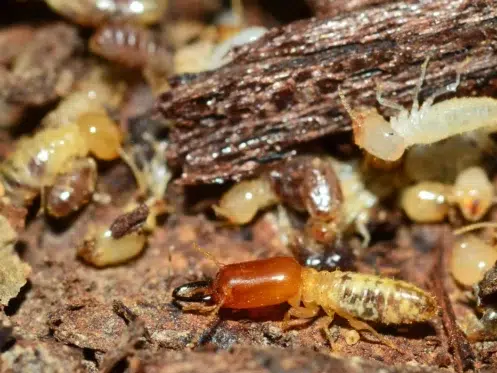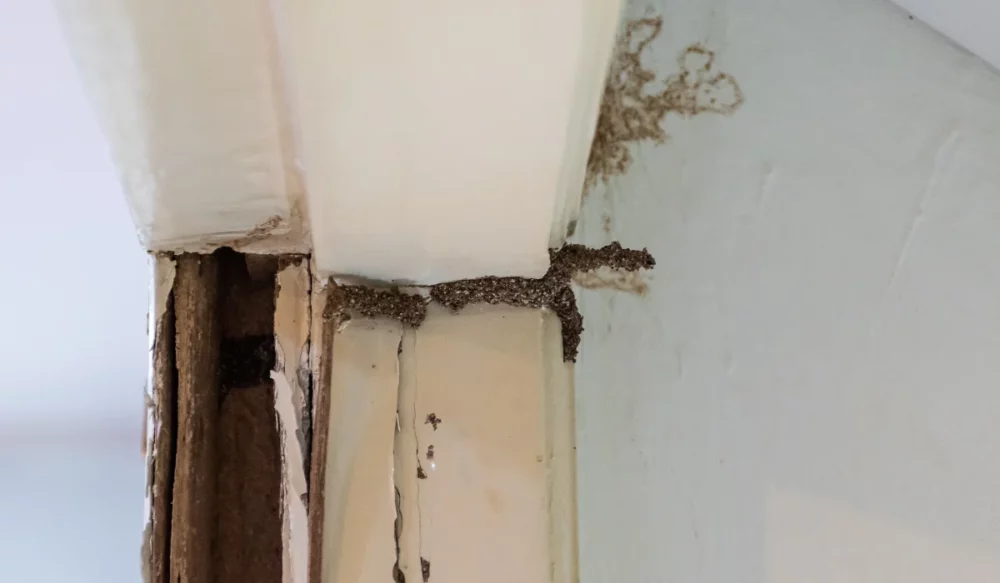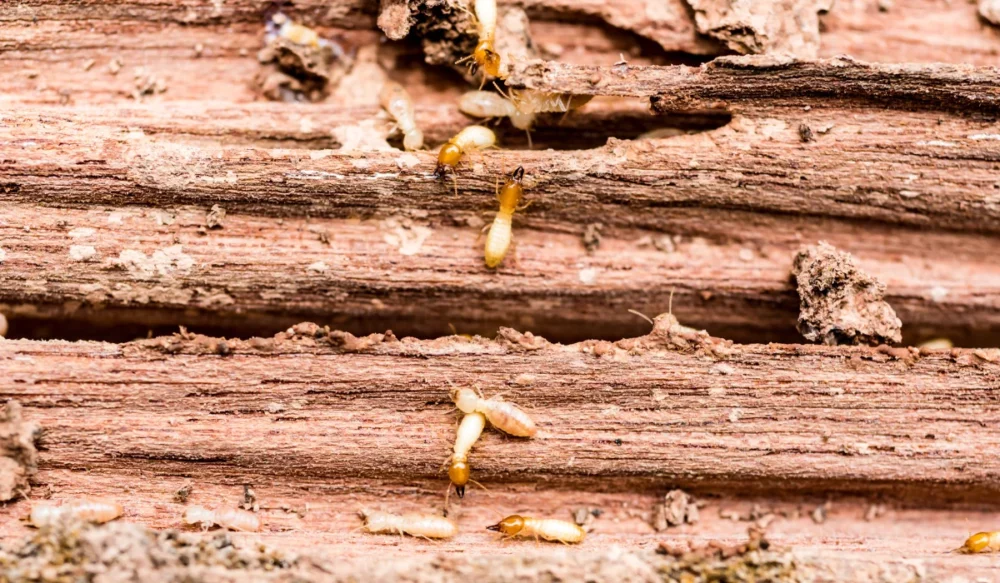Monsoon rains bring much-needed relief to Arizona, but they also set the stage for one of the most destructive pests: termites. When the soil becomes saturated, it creates ideal conditions for subterranean termites to expand their reach.
For homeowners in Phoenix, Tucson, and surrounding cities, termite activity often spikes after heavy rains, making fall one of the riskiest times for infestations.
Understanding how termites behave after the monsoon season and why Arizona homes are so vulnerable can help you stay ahead of the problem. With the right preventative measures and timely termite inspection, you can avoid costly termite damage and protect your property.
Key Takeaways
- After the monsoon, termites, which thrive in damp soil, experience higher activity in Arizona during the fall rains.
- Signs of termite infestation include mud tubes, damaged wood, and flying termites.
- Standing water and moisture levels around homes increase the risk of termite colonies.
- Professional pest control services in Phoenix and Tucson provide long-term protection.
Why Termites Thrive After Monsoon Rains
Termites, after the monsoon rains in Arizona, thrive due to the sudden increase in soil moisture. Subterranean termites rely on damp soil to survive, and the monsoon season provides the perfect boost to their colonies. When the rains stop and the ground starts to dry, termites push deeper into homes in search of stable moisture levels.
In the Phoenix area, homes with wooden structures, crawl spaces, or standing water near foundations are especially vulnerable. Fall is when many homeowners first notice mud tubes along baseboards, garages, or exterior walls, an early warning sign of an infestation.
Termite Swarms in Late Summer and Fall
One of the most visible results of monsoon rains is the appearance of termite swarms. These flying termites, also called alates, leave established termite colonies to start new colonies nearby. If you’ve ever seen winged swarmers around your windows or doors after heavy rains, it’s a sign of active termite activity close to your home.
In Tucson, swarms often appear in late summer and fall. Even a small swarm can lead to a new colony, so call a pest control pro at the first sign of flying termites.
Signs of Termites in Arizona Homes
Recognizing signs of termite infestation early can save thousands of dollars in repairs. Homeowners in Glendale, Phoenix, and Scottsdale often report mud tubes as one of the first visible warnings. Subterranean termites build these narrow tunnels to travel safely from the soil into wooden structures.
Other signs of termite damage include hollow-sounding or damaged wood, bubbling paint near baseboards, or discarded wings from swarmers. Attics, crawl spaces, and garages are common entry points through which termite colonies gain access to food sources, such as structural wood and furniture.
How Moisture and Standing Water Attract Termites to Your Home
After the monsoon season, standing water around your property can create long-term risks. Pooling near foundations or in crawl spaces raises moisture levels, which makes it easier for subterranean termites to survive. Even minor leaks around plumbing, garages, or attics can provide enough moisture to support termite colonies.
Since heavy rains often leave the soil damp, professional pest control experts recommend regular termite inspections in the fall. Treating entry points and removing excess standing water are two effective preventative measures.
Why Phoenix and Tucson Homes Face Higher Fall Termite Risk
Arizona’s desert climate shapes termite behavior. In Phoenix and Tucson, termites stay active all year, but infestations often peak in the fall after rains. Clay-heavy soil around Phoenix retains water, allowing colonies to spread beneath homes.
Older neighborhoods with mature trees and established landscaping often have more food sources and higher pest activity. Local pest control experts usually recommend bait stations as part of long-term termite treatment plans for these areas.
Professional Termite Control Solutions
Once termites establish themselves, DIY fixes rarely eliminate the entire colony. A professional pest control service can identify hidden mud tubes, swarmers, and damaged wood, and recommend targeted solutions such as bait stations or liquid termite treatment.
Green Home Pest Control offers termite inspections and customized treatments for homeowners throughout Arizona. By focusing on preventative measures and long-term monitoring, you can stay pest-free while protecting wooden structures from ongoing termite damage.
Other Pests That Emerge After Monsoon Season
Termites aren’t the only pests that thrive after monsoon rains. Scorpions, cockroaches, and bed bugs also increase in activity when moisture levels rise.
In fact, many Phoenix homeowners report scorpions seeking shelter inside garages and crawl spaces during the cooler fall months.
Scheduling a pest control service in the fall helps address termite infestations while also preventing other pests from entering through shared entry points.
Making the Right Termite Control Choice for Your Arizona Home
Termites following Arizona’s monsoon rains are a serious concern for homeowners in Phoenix, Tucson, Glendale, and nearby cities.
With heavy rains driving up moisture levels, termite colonies become more aggressive in their search for food sources. By scheduling a termite inspection and working with a professional pest control expert, you can prevent termite infestations before they cause lasting damage.
Green Home Pest Control specializes in termite control and year-round pest management. Protecting your home from swarmers, mud tubes, and damaged wood starts with proactive care.
Call today for a free estimate and safeguard your Arizona home this fall.
FAQs
Why do termites become more active after Arizona’s monsoon season?
Termites rely on moisture to survive, and monsoon rains raise soil moisture levels. After the ground dries, termites push into homes seeking stable conditions, which increases the risk of infestation.
How do I know if I have termites in my home?
Look for mud tubes along walls or baseboards, damaged wood, discarded wings from swarmers, and unusual bubbling paint. A professional termite inspection can confirm hidden termite activity.
What is the best way to protect my Arizona home from termites?
The most effective approach is scheduling a professional pest control service. Experts can recommend bait stations, liquid treatments, and preventative measures to protect your home year-round.




